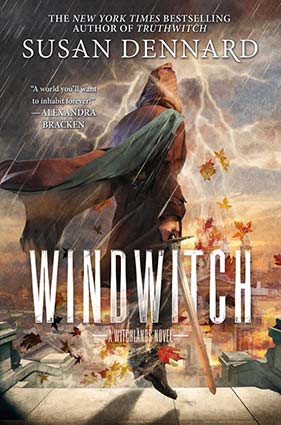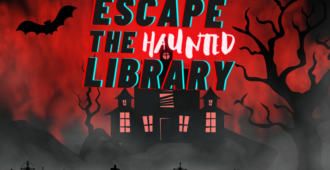





 Written by Susan Dennard
Written by Susan Dennard
Do you write chronologically? Or are you prone to writing whatever scene strikes your fancy? Do you skip around, hop ahead, circle back? Or are you inclined to move from scene 1 to scene 2 to 3 and beyond?
I always thought I was a chronological writer. I mean, I sit down and write what 1) I have listed on my outline, or 2) what I feel ought to come next. I follow my emotional dominoes as best I can, and in attempt to give every scene a cookie, I write lots of action and lots of arguing.
Yet, when I follow this method, I always find that my drafts are woefully out of order. None of the scene beats seem to hit that gradual incline of tension and stakes:

Instead, it’s like this:

Specifically, I tend to write WAY TOO MUCH in the first half of the book. Too much emotional intensity, too much inter-character conflict, too much action, too much tension, etc.
It’s like I pour out all the REALLY BIG scenes at once…and then I’m left floundering over what comes next. Then, only after agonizing, do I realize nothing comes next, but lots must come between.
An example. In Windwitch, the very first scene I wrote for the Bloodwitch named Aeduan was dark. Like, I’m talking Aeduan goes banana-pants crazy after an encounter hits a bit too close to home. People then die at Aeduan’s hands.
I loved that scene. It was one of those instances where it just poured out of me in a rush of fury and feeling. Yet, as soon as I finished, I was stuck. I could see nowhere for him to go after that scene. You see, I am very, very, very particular about writing murder in YA—I simply do not allow my characters to kill unless it’s absolutely 100% critical to the story. (In my opinion, the emotional consequences are simply too big to have a character take human life. Ever.)
Needless to say, it was…erm…not good that I had this crazy slaughter scene in literally the first scene I wrote for Aeduan.
So I ditched the pages, with much heartbreak, and tried a new approach (or many new approaches).
About a month ago, though, I was hitting the final hard scene beats that precede an epic climax, and BAM! I realized Aeduan’s vicious opener belonged here, at the end of his story. The stakes were running high, his emotions were running even higher, and it was very justifiable for him to take human life based on the previous scenes. (Note: I said justifiable, but not morally right. There’s a huge distinction, and it’s important to remember that in your writing!)
Aeduan’s bloodbath scene was not the only one I wrote in the wrong order for Windwitch. In fact, almost EVERY SINGLE SCENE for every single POV was something I wrote too early (or too late) in the story. But once I rearranged it like the ultimate jigsaw puzzle, I had a book with the proper arc of rising tension and stakes.
This happens every time I draft a novel, yet it’s only with Windwitch that I finally realized what I’ve been doing all this time.
And honestly, it has been a MASSIVE epiphany for me—one that carries huge relief. I’m not a terrible writer! I’m not writing wasted words that will be thrown away forever. I’m simply not getting the scenes down in the proper order.
It’s like that story that author Liz Gilbert shared about the poet Ruth Stone: “[Ruth] would catch the poem by its tail and she would pull it backwards into her body as she was transcribing on the page. In those instances, the poem would come up on a page perfect and intact, but backwards, from the last word to the first.”
It is absolutely okay if the story comes out reversed or jumbled or upside down because it’s out, and words on the page can always be fixed later.
What about you all? Do you write chronologically? Out of order? All jumbled and messy as I do?
Follow Susan Dennard on Twitter, on Facebook, and on The Witchlands website.







Thank you, for creating an epiphany for me too. I have been stuck with the “what next” for months! You are absolutely right! It doesn’t matter what is next. What matters is getting it down on paper. We can move it around after it is written. So simple and so motivating!
Yes, this is me, so much. I’m writing my first novel (well the one that might seriously be worth publishing) and I find that I get stuck then remember I wrote something that would fit in the gap more or less perfectly.
So thanks for this. I feel less weird now! 🙂
I write chronologically. I find it easier than trying to fit all the pieces back together at the end. That’s just me though. I will imagine scenes in my head and may jot notes on them. I’ll figure out where they go later or might never use them. It depends on how the story’s going.
Thank you for describing the agony of revision so succinctly. No wait, I don’t like the use of the adverb there.
Thank you for your paean to the agony of revision; I feel better knowing I’m not the only one.
You rock. Have a nice day.
My first novel comes out this year and I learned a lot about how I write during the editing process. Usually, I write a first sentence or scene that’s been in my head and go for a bit, then write a loose seven point outline (Dan Wells, Story Structure) and write from there until the story is “done” and then read and reread the thing making little edits and polishes, deleting the end, deleting the beginning, until it feels ready to send out. However, when I sold my draft, during the first macro-edit with the editor we did a huge expansion—it really was a delightful challenge to learn to write in a new way, expanding scenes out of order here and there under editorial direction. Like you describe, I had way too much going on—loads of action, not a lot of reflection and dealing with what happened. I needed to show a lot more character development and interaction. In my case, the chronology of events didn’t really change—I added a fourth and fifth act to the book, but a lot of stuff in the first three acts needed to be fleshed out. I’m very interested in what you’ve shared here—as I revise some of my other drafts, I’m going to take a close look at what’s coming in what order and see if that would fix what my editor pointed out as underdeveloped if I just rearrange. Thanks!
I usually find myself writing full scenes while in the process of brainstorming. It does work well to just follow the inspiration when it strikes. Being a musician, I’ve also found that a lot of scenes come to me while listening to songs. As I put together a writing playlist for each project, the songs often set the tone of each scene.
Having written and rearranged scenes on paper for many years, I’ve found that Scrivener is a fantastic resource. By separating scenes within each chapter as individual documents, all accessible from the same project folders, Scrivener has made it possible to simply drag and drop scenes into new orders. They offer a 30-day free trial if you want to try it.
I don’t really have an outline, just a cluster of scenes that are approximately chronological. The individual scenes are very intense, but most of the work of writing is finding the path that leads forward from one to the next. But they do need to stay chronological. I used to try to write ahead, while the next scene was bright in my mind. But then I would have to come back, and write my way out of the previous scene, using the connections I had already created there, and I invariably found that when I got to the new scene it didn’t have any of the connections I needed to tie it into place. It was like a scene from a totally different story. Then I would have to either rewrite the forward scene completely or even throw it out. The later scenes have to grow organically out of the earlier ones.
I also write wildly out of order. Sometimes this results in scenes that stay on the scrap pile as a sort of alternate history, because the story never actually went that way. Even those are useful as I get a better sense of how the characters would would react in that circumstance, even if it never happens. But other things do get pulled back in at their proper times. Sometimes I know where in the chronology (and loose outline, when I write one) a scene goes. I’ll leave known gaps between things and fill them in later–sometimes requiring a re-write of later things, and sometimes fitting more or less perfectly as a bridge between them. It’s a messy, messy way to write, but I tend to get the passionate scenes down early and then fill in the scenes that will build the tension to reach those moments of decision, climax, turning points and change. In the book I’m working on right now, I wrote the nearly last chapter first. I always knew it would need a few chapters after it but that it would be near the end, but that was the scene where I really learned who this character was under pressure. Everything else was working backwards to figure out how to get her there.
Susan,
I was very lucky to receive an ARC of Windwitch and had the pleasure of reading my Truthwitch copy directly beforehand. I’m in awe of your world-building, your perfectly flawed and interesting characters, and the arc of the story. This series is epic. As I write this I am on the final 40 or so pages of Windwitch and I know I’ll be recommending this series to many! I’ve already loaned my copy of Truthwitch to a fellow bookseller and I know she will fall in love with it as well. Thank you for creating a world and characters the likes that we have not yet seen! Bravo! ????????
Thus far, my writing attempts have all been chronological. Maybe I should mix it up a bit! ????
Those question marks were emojis. I guess they didn’t transfer. Hahaha! Whoops!